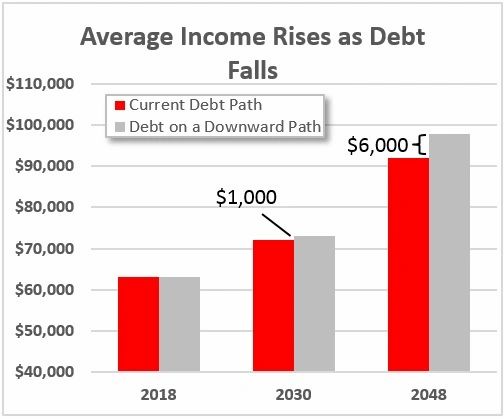
Kurtosis measures the heaviness of a distribution’s tails relative to a normal distribution. You can use the cor() function to calculate the Pearson correlation coefficient in R. Sometimes the variance of the error terms depends on the explanatory variable in the model. Therefore if regression error ($\epsilon$) and regressors ($X$) are independent we cannot have heteroskedasticity, then homoskedasticity must hold.
A p-value, or probability value, is a number describing how likely it is that your data would have occurred under the null hypothesis of your statistical test. P-values are usually automatically calculated by the program you use to perform your statistical test. They can also be estimated using p-value tables for the relevant test statistic.
Group identities can undermine social tipping after intervention – Nature.com
Group identities can undermine social tipping after intervention.
Posted: Thu, 22 Sep 2022 07:00:00 GMT [source]
\nSpecifically, in the presence of heteroskedasticity, the OLS estimators may not be efficient . Under certain assumptions, the OLS estimator has a normal asymptotic distribution when properly normalized and centered . This result is used to justify using a normal distribution, or a chi square distribution , when conducting a hypothesis test. In simple linear regression analysis, one assumption of the fitted model is that the standard deviation of the error terms are constant and does not depend on the x-value.
In time series framework a GARCH process is a common example of heteroskedasticity and it imply some dependency among errors; more precisely imply correlation among some squared error terms. When implemented properly, weighted regression minimizes the sum of the weighted squared residuals, replacing heteroscedasticity with homoscedasticity. Standard error estimates computed this way are also referred to as Eicker-Huber-White standard errors, the most frequently cited paper on this is White (1980).
Computation of Heteroskedasticity-Robust Standard Errors
When the residual terms’ distributions are approximately constant across all observations, the homoskedastic assumption is said to be tenable. Conversely, when the spread of the error terms is no longer approximately constant, heteroskedasticity is said to occur. Under certain assumptions, the OLS estimator has a normal asymptotic distribution when properly normalized and centered (even when the data does not come from a normal distribution). This result is used to justify using a normal distribution, or a chi square distribution (depending on how the test statistic is calculated), when conducting a hypothesis test. More precisely, the OLS estimator in the presence of heteroscedasticity is asymptotically normal, when properly normalized and centered, with a variance-covariance matrix that differs from the case of homoscedasticity. Recall that ordinary least-squares (OLS) regression seeks to minimize residuals and in turn produce the smallest possible standard errors.

As you can see, when the error term is homoskedastic, the dispersion of the error remains the same over the range of observations and regardless of functional form. \nAs you can see, when the error term is homoskedastic, the dispersion of the error remains the same over the range of observations and regardless of functional form. For example, OLS assumes that variance is constant and that the regression the error term is said to be homoscedastic if does not necessarily pass through the origin. In such a case, the OLS seeks to minimize residuals and eventually produces the smallest possible residual terms. By definition, OLS gives equal weight to all observations, except in the case of heteroskedasticity. Suppose a researcher wants to explain the market performance of several companies using the number of marketing approaches adopted by each.
Ways to Deal with Heteroskedasticity in Time Series
Homoscedasticity also means that when you measure the variation in a data set, there is no difference between different samples from the same population. Homoscedasticity essentially means ‘same variance’ and is an important concept in linear regression. Homoskedasticity is important because it identifies dissimilarities in a population. Any variance in a population or sample that is not even will produce results that are skewed or biased, making the analysis incorrect or worthless. We cannot say with certainty that the model has the property of homoscedasticity.
You can tell if a regression is homoskedastic by looking at the ratio between the largest variance and the smallest variance. In other words, OLS does not discriminate between the quality of the observations and weights each one equally, irrespective of whether they have a favorable or non-favorable impact on the line’s location. The subsequent code chunks demonstrate how to import the data into R and how to produce a plot in the fashion of Figure 5.3 in the book.
What does homoscedasticity mean?
It is not the perfect example, but it is real, with which we can better understand the concept. However, this does pivot the question somewhat and might not always be the best option for a dataset and problem. So, instead of using population size to predict the number of bakeries in a city, we use population size to predict the number of bakeries per capita. So here, we’re measuring the number of bakeries per individual rather than the raw number of bakeries.

Consequently, each probability distributions for each y (response variable) has the same standard deviation regardless of the x-value (predictor). In statistics, a sequence (or a vector) of random variables is homoscedastic (/ˌhoʊmoʊskəˈdæstɪk/) if all its random variables have the same finite variance; this is also known as homogeneity of variance. The complementary notion is called heteroscedasticity, also known as heterogeneity of variance. Another way of saying this is that the variance of the data points is roughly the same for all data points. One of the assumptions of an anova and other parametric tests is that the within-group standard deviations of the groups are all the same . If the standard deviations are different from each other , the probability of obtaining a false positive result even though the null hypothesis is true may be greater than the desired alpha level.
Points that do not fall directly on the trend line exhibit the fact that the dependent variable, in this case, the price, is influenced by more than just the independent variable, representing the passage of time. The error term stands for any influence being exerted on the price variable, such as changes in market sentiment. An error term appears in a statistical model, like a regression model, to indicate the uncertainty in the model. In the context of the temperature versus time example, the variance of errors simply quantifies the amount of spread you can expect to encounter in your temperature values about the underlying temporal trend in these values. Under the assumption of homoscedasticity, the amount of spread is unaffected by the passage of time (i.e., it remains constant over time). However, under the assumption of heteroscedasticity, the amount of spread is affected by the passage of time – for example, the amount of spread can increase over time.
4 Heteroskedasticity and Homoskedasticity
The Akaike information criterion is one of the most common methods of model selection. This is the dependence of scattering that occurs within a sample with a minimum of one independent variable. This means that the standard deviation of a predictable variable is non-constant. With these two variables, more of the variance of the test scores would be explained and the variance of the error term might then be homoskedastic, suggesting that the model was well-defined. Serious violations in homoscedasticity (assuming a distribution of data is homoscedastic when in actuality it is heteroscedastic) result in underemphasizing the Pearson coefficient. Assuming homoscedasticity assumes that variance is fixed throughout a distribution.
- The study of homescedasticity and heteroscedasticity has been generalized to the multivariate case, which deals with the covariances of vector observations instead of the variance of scalar observations.
- All inference made in the previous chapters relies on the assumption that the error variance does not vary as regressor values change.
- With examples, explore the definition of regression analysis and the importance of finding the best equation and using outliers when gathering data.
- On PhD level economentrics they teach all kinds of weird stuff, but it takes time to get there.
I was basically just asking if you mean non-constant variance of the residuals as a function of the input. Heteroscedasticity is a hard word to pronounce, but it doesn’t need to be a difficult concept to understand. Homoskedasticity is one assumption of linear regression modeling and data of this type works well with the least squares method. If the variance of the errors around the regression line varies much, the regression model may be poorly defined. Homoscedasticity is a characteristic of a linear regression model that implies that the variance of the errors is constant over time.
Factors Influencing the result in Hypothesis Testing
One of the assumptions of the classical linear regression model is that there is no heteroscedasticity. Breaking this assumption means that the Gauss–Markov theorem does not apply, meaning that OLS estimators are not the Best Linear Unbiased Estimators (BLUE) and their variance is not the lowest of all other unbiased estimators. Biased standard errors lead to biased inference, so results of hypothesis tests are possibly wrong. The residual , in this case, means the difference between the predicted yi value derived from the above equation and the experimental yi value. Multiple linear regression is a statistical technique that uses several explanatory variables to predict the outcome of a response variable. A plot of the error term data may show a large amount of study time corresponded very closely with high test scores but that low study time test scores varied widely and even included some very high scores.
Movements and spatial usage of harbour seals in the Elbe estuary in … – Nature.com
Movements and spatial usage of harbour seals in the Elbe estuary in ….
Posted: Mon, 24 Apr 2023 07:00:00 GMT [source]
To compare how well different models fit your data, you can use Akaike’s information criterion for model selection. What’s the difference between univariate, bivariate and multivariate descriptive statistics? They tell you how often a test statistic is expected to occur under the null hypothesis of the statistical test, based on where it falls in the null distribution. So the variance of scores would not be well-explained simply by one predictor variable—the amount of time studying. In this case, some other factor is probably at work, and the model may need to be enhanced in order to identify it or them. Linear regression consists essentially of identifying a trend-line that best represents the relationship between two quantitative variables.
Any normal distribution can be converted into the standard normal distribution by turning the individual values into z-scores. In a z-distribution, z-scores tell you how many standard deviations away from the mean each value lies. Therefore, any bias in the calculation of the standard errors is passed on to your t-statistics and conclusions about statistical significance. \n\nTherefore, any bias in the calculation of the standard errors is passed on to your t-statistics and conclusions about statistical significance.
- In cases where the White test statistics are statistically significant, heteroscedasticity may not necessarily be the cause, but specification errors.
- Unlike heteroscedasticity, in homecedastic statistical models the value of one variable can predict another (if the model is unbiased) and, therefore, errors are common and constant throughout the study.
- Performing logistic or square root transformation to the dependent variable may also help.
- This means your the error term is said to be homoscedastic ifs may not be generalizable outside of your study because your data come from an unrepresentative sample.
Heteroscedasticity may lead to inaccurate inferences and occurs when the standard deviations of a predicted variable, monitored across different values of an independent variable, are non-constant. Residuals can be tested for homoscedasticity using the Breusch-Pagan test, which regresses square residuals to independent variables. The BP test is sensitive to normality so for general purpose the Koenkar-Basset or generalized Breusch-Pagan test statistic is used. For testing for groupwise heteroscedasticity, the Goldfeld-Quandt test is needed. Heteroscedasticity doesn’t create bias, but it means the results of a regression analysis become hard to trust.
Spread is about how far you can expect an observed temperature value to be at time $t$ relative to what is ‘typical’ for that time $t$. The standard deviation reflects variability within a sample, while the standard error estimates the variability across samples of a population. Homoskedastic is the situation in a regression model in which the residual term for each observation is constant for all observations. It represents the phenomenon the model seeks to “explain.” On the right side are a constant, a predictor variable, and a residual, or error, term. The error term shows the amount of variability in the dependent variable that is not explained by the predictor variable.



